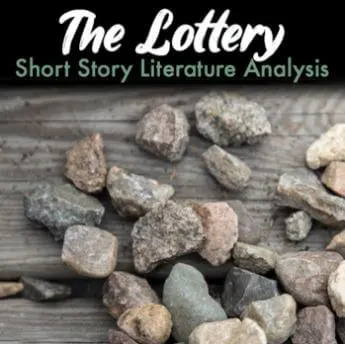When it comes to teaching plot, choosing the right texts is essential. Read on to learn tips for teaching plot with short stories, including a list of titles with strong and engaging plots your students are sure to love.
Are you teaching plot with short stories? If not, by the end of this post, you’ll be eager to.
Sure, teaching students literary terms like plot, theme, and character is easy. However, to deepen their understanding of literature, students need a strong foundation of the elements of literature. Once they understand these elements, they will unlock a new level of enjoying, discussing, and critically analyzing literature.
Maybe you’re gearing up to teach, reteach, or review plot in your classroom. Or, perhaps, you’re simply looking to refresh your approach with scaffolded instruction, strong mentor texts, and engaging activities. Whatever your reason for being here, this post will provide you with teaching tips and tips and engaging short stories you can bring to your classroom.
Why is Teaching Plot Important?
Once students know the plot elements, they can begin diving into the text to identify them as they occur. However, there’s much more to plot than a “series of events.” Teaching plot helps students understand literature on a deeper level.
For example, understanding plot helps students see where authors emphasize themes and develop characterization. Therefore, students must understand the plot to see the whole picture and make sense of the story. After all, isn’t this kind of deeper, critical thinking the goal at the secondary level? (Yes. Yes, it is.)
The Benefit of Teaching Plot with Short Stories
When it comes to teaching plot, short stories are the perfect teaching tool. Sure, you can teach plot with a stand-alone lesson reviewing the elements of a plot structure. But what about the application of knowledge? The interactive experience? The opportunity for student questions and discovery?
But that’s where short stories come in handy.
Teaching plot with short stories allows students to further understand plot and its impact on the story as a whole. Additionally, the shorter length of these stories allows students to explore various plot structures and techniques without taking up weeks or months of the curriculum. With short stories, students don’t have to read through hundreds of pages before making sense of the plot or considering why the author told the story a particular way. In some cases, they can read an entire story and identify and analyze its plot in only a few pages.
Short stories give students a unique advantage over longer texts as they can identify the plot elements more easily, critically think about how they add to the story, and understand why the plot is essential to the author’s craft of developing their overall message. Then, they can apply what they’ve learned to longer, more complex texts and their plots with more clarity and confidence.
Terms to Teach
More specifically, ensure you’re taking full advantage of teaching plot with short stories. Be sure to review the following terms with your students: Exposition, Inciting Incident, Rising Action, Climax, Falling Action, and Resolution.
But it’s not just the elements of plot structure you should teach – and perhaps this is where short stories come in most handy. Teaching terms that help students understand the various ways authors can reveal and develop a plot is vital too. Working with short stories allows you to expose your students to several examples of different plot techniques, such as flashbacks, foreshadowing and in media res.
The Best Short Stories for Teaching Plot
If you don’t already know, I love using short stories as teaching tools. However, certain short stories really stand out thanks to their plot. Here are a few of what I consider to be the best short stories for teaching plot:
1. “He-y, Come on Ou-t!” by Shinichi Hoshi
This short science fiction tale is sure to grab students’ attention and is a great way to expand how they think about the plot as the climax doesn’t come until the end of the story.
The story takes place in a Japanese fishing town where villagers discover a (seemingly) bottomless hole in the wake of a typhoon. Students will have fun tracking the plot elements as the villagers try to figure out what to do with the gaping hole. Furthermore, “He-y, Come on Ou-t!” is an excellent example of how a strong plot works to develop a story’s themes.
2. “The Sniper” by Liam O’Flaherty
Even your most reluctant readers will be eager to see how the plot of “The Sniper” unfolds. Like Hoshi’s “He-y, Come on Ou-t!,” the story’s climax doesn’t occur until the end, keeping students on the edge of their seats.
“The Sniper” follows a rooftop sniper contemplating his next move during an Irish revolution in the 1920s. The suspense comes to an end at the story’s climax when the sniper tricks an enemy soldier into exposing himself before shooting him dead. The irony is that the sniper discovered the opposing gunman was his brother, bringing up an interesting question for students: does a resolution always mean a happy ending?
3. “The Lottery” by Shirley Jackson
Jackson’s “The Lottery” is a great story all around. However, the story’s plot is particularly well-done. From the pacing to the plot twists, Jackson sure knows how to write a plot that will keep students engaged, guessing and, by the end, slightly horrified.
The story begins with a descriptive exposition, describing a small pastoral town and its townspeople. However, the conflict begins as soon as “jovial” Mr. Sommers begins the annual lottery with the help of the symbolic black box. Between the foreshadowing in the rising action, the shocking climax, and the (perhaps more shocking) falling action, students will have plenty to discuss around the story’s plot.
4. “The Test” by Theodore Thomas
It was all a dream – err simulation – in Thomas’ “The Test.” In a mere 673 words, this short story challenges students’ conception of plot. As protagonist Robert drives down the turnpike, students quickly realize there is much more to this story’s plot than meets the eye.
While the story’s car crash tricks students into thinking it’s the climax, they quickly realize that it’s not. Instead, the rising action leads to a more sinister climactic reveal. (Cue the engaging discussion.)
5. “The Veldt” by Ray Bradbury
I love Ray Bradbury and I love his short story “The Veldt.” The best part? It has a compelling plot that students love. Students always enjoy watching the plot, including the conflict, unfold as it hits close to home thanks to its focus on technology.
The story centers on the Hadleys and their life in their fully automated house, “The Happylife Home.” However, the plot thickens as parents George and Lydia become increasingly concerned about technology’s impact on their children. With that said, students always enjoy the building suspense during the rising action.
Questions to Ask Students when Teaching Plot with Short Stories
Asking students the right questions is key in helping them identify and analyze plot. Consider asking the following questions to guide your students to success:
- Who is your main character? What do they want? How do you know?
- What is at stake if the character fails? What is the reward if they succeed?
- How does the main character attempt to achieve that goal?
- Who or what gets in their way? How?
- How does the main character finally succeed (or fail)?
- What is the final outcome? How is it all resolved?
- How does this resolution impact the story’s character(s)? The story’s theme?
- In the end, what message do you think the author is trying to relay?
More Tips for Teaching Plot with Short Stories
- Review plot with an engaging game. Break up a popular story, like “Cinderella” or “the Three Little Pigs” into six to ten statements, including at least one for each plot element. Then, present the statements out of order to the students. Have them work independently, in partners, or as a class to organize the statements on a plot diagram correctly. This is a fun, quick, and relatively easy way to get students thinking about plot.
- Save time with a quick homework assignment. Since your students have likely learned plot structure before, there’s no need to spend all the time learning the elements of plot. Instead, assign students a simple review task for homework. Provide them with the names and descriptions of the different plot elements and have them tap into their prior knowledge as they label a plot diagram.
- Begin with important events. Some short stories have surprisingly complex plots, despite their short length. If your students are struggling or you’re looking to challenge them with one of these texts, consider this trick: begin by identifying important events. Once the class has compiled a list of significant moments, work together to assign each event to the appropriate place in the plot diagram.
- Scaffold instruction as needed. Start with reading a short story as a whole class and identifying its plot structure. Then, have students go through the same process with a different story, working in small groups before discussing their findings as a class. Finally, choose three to five short stories that best fit the varying abilities of your class. Assign each student the story that best fits them in terms of interest or ability, or, ideally, both to read, identify, and analyze the plot.
- Use graphic organizers. Graphic organizers are a big help when teaching plot with any story. Whether you call it a plot diagram or story mountain, or anything in between, a graphic organizer helps them label and chart the elements of plot as they identify them. Additionally, visual organizers help them understand the relationship each element has to the others and the overall story.
So there you have it! My best tips and recommended titles for teaching plot with short stories. And if you’re looking to use short stories to teach other essential literary elements, be sure to check out my posts about teaching characterization and theme as well.
When it comes to better teaching, I truly believe we’re better together. With that said, the ideas mentioned above are far from the only ideas out there. If you’ve had success teaching plot with short stories, share away! Leave your advice and recommendations in the comment below.


